Dice is all we do here at Awesome Dice, and as often as we talk about the bad old days of coloring in dice with crayons from the Dungeons & Dragons boxed set, that was actually very recently in the history of dice. As it turns out, dice date back about as long as human civilization does, with the earliest dice found in Egyptian tombs and archeological digs in ancient Sumeria.
Above is a brief timeline of the history of dice along with a map showing you where the historical events took place. Below we’ll talk about some of the sources and debunk a couple of the false claims of oldest dice.
Sources
Because we’re big fans of good science here at Awesome Dice, here is the complete list of all dice facts from the History of Dice infographic along with the source for each piece of data. After this we’ll address some of the info that didn’t make it into this history, and why:
History of Dice
Dice have been used in games throughout the history of civilization, from ancient Egypt and Sumeria to dice for Dungeons & Dragons.
- 3100 BCE: Earliest hieroglyphics representing Senet boards found. Senet uses 2-sided playing pieces for randomization. Source: In Search of the Meaning of Senet.
- 3000 BCE: Oldest confirmed dice found in a dig site in Turkey along with other game pieces. Date cited as “near” 3,000 BCE — could be a bit less. Source: Discovery News.
- 3000 BCE: Holes are found punched into clay floors in the Mexico Tlacuachero site, similar to modern dice game score boards. Source: National Geographic.
- 2600 BCE: Oldest confirmed dice. Pyramidal d4s found in the board game, the Royal Game of Ur from ancient Sumeria. Source: Brittish Museum.
-
2000 BCE: Cubical dice found in Egyptian tombs. Source: Encyclopedia Britannica.
- 1333 BCE: Knucklebones — primitive dice shaped like animal bones — found in Tutankhamen’s tomb. Source: Egyptian Museum Cairo
- 1188 BCE: Approximate date that Sophocles said dice were invented by Palamedes during the siege of Troy. Source: Encyclopedia Britannica.
- 900 BCE: Tuscania dice found near Rome. Cubical dice with standard pip markings. Source: Board and Table Games from Many Civilizations
- 600 BCE: Cubical dice found in Chinese excavations. Source: Encyclopedia Britannica.
- 400 BCE: Oldest written records of dice, in the Sanskrit epic, the Mahabharata. Source: Encyclopedia Britannica.
- 300 BCE: Oldest d20 from Egypt dated from the Ptolmaic period. Source: Metropolitan Museum of Art.
- 150 BCE: Egyptian d12 found from the Ptolmaic period. Source: Dicecollector.com
- 100 AD: 2nd oldest 20-sided die. This ancient Roman d20 sold at auction for $17,925 in 2003. Source: Christie’s
- 1000 AD: Dice buried in Viking grave mounds. Source: Proceedings of the Society of Antiquaries of Scotland, Volume 14
- 1600 AD: Dice first subject to mathematical analysis by Galileo and Girolamo Cardano. Probability mathematics conceived. Source: Encyclopedia Britannica.
- 1888 AD: 8-sided poker dice. Source: Dicecollector.com
- 1906 AD: 10-sided dice patented in the US. Source: US Patent Office
- 1950 AD: Oldest plastic d20, numbered 0-9, patented by Tokyo-Shibuara Electric Company. Source: Dicecollector.com
- 1974 AD: Dungeons & Dragons published and sells a set of polyhedral dice. D20 numbered 0-9 and no d10. Source: our memory.
- 1980 AD: At GenCon the first 10-sided dice claimed to have been invented. Source: our memory.
- 1985 AD: The zocchihedron, d100 is released. Source: US Patent Office
Some Debunking

Gamers doing some cursory poking around on the internet might notice a few claims of older dice that are not included in this history. Certainly if you know of something we missed, please drop a comment with a link to the sources! However, there are some seemingly official-looking stories out there that don’t withstand scrutiny. Here are the big ones:
Burnt City Dice: If you go looking around online for the oldest dice found, you will inevitably stumble on a site talking about the world’s oldest backgammon set found in the Burnt City, along with the oldest set of dice. Every report of this find can be sourced back to a single Persian Journal article from 2004 (no longer online). This story has been repeated and scraped and reposted countless times across the internet. I have not been able to find any reports confirming the dice from the Burnt City that doesn’t take its text from the Persian Journal article.
Over at Chess Quest this article [dead link removed] does a pretty good and well-documented job of debunking the reports of the Burnt City backgammon set & dice. Furthermore, it looks like the photo of ancient dice used in the article and every other repost of the article were actually taken from a now defunct website. The dice are from a collection of ancient dice and are actually roman dice made of bone dated from 100 BCE to 100 AD, and have nothing to do with the Burnt City. Thus this story doesn’t hold up enough to be included in the history of dice.
5000 BCE Dice: There are a handful of sites out on the web that claim that dice have been found dated back to 5000 BCE, and of course none of them list any sources. I’m pretty sure that this mis-dating also comes from that pesky Burnt City Persian Journal article. The article made reference to dice from 5,000 years ago. I strongly suspect that someone misinterpreted that as meaning 5000 BCE, and like the Burnt City story itself, the misinformation spread across the web.
Updates
11/11/2012: Added new oldest d20 for Egyptian d20 at Metropolitan Museum of Art.
5/26/2012: Added Tutankhamen knucklebone reference.
If you are aware of an oldest dice find or a significant archaeological find that you think should be added, please drop a comment with a link to the source and we’ll get it added if we can verify the info, and if we think it’s significant enough to squeeze in.


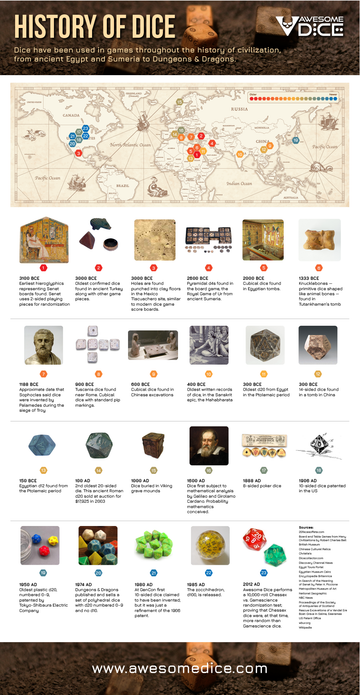
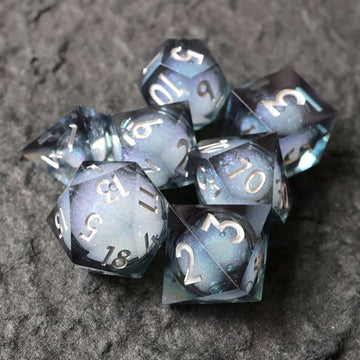
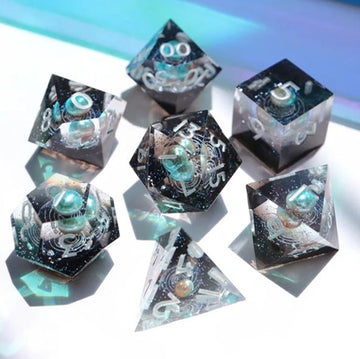
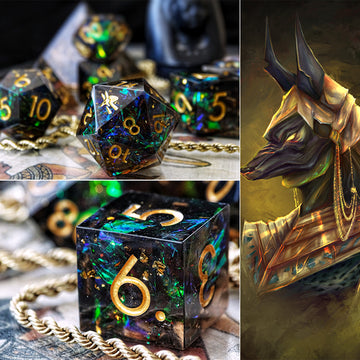
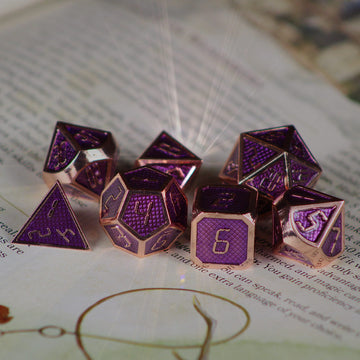
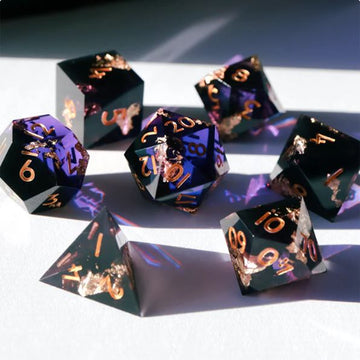
There’s a d20 in the Cairo Museum, just visited last week. Prompted me to look this up. Thanks for this article – great to know. I woulda guessed 1970s!
Thank you
There is a 12 sided die in the Cluny Museum in Paris that is carved from ivory. Each “side” has a divit carved in and Roman numerals etched inside. As a gamer I couldn’t resist snapping a photo. I’m not sure if they’ve been able to date it. The card in front of it in the display says: Dice (?) Medievale (?).
See https://thomasguild.blogspot.com/2016/11/medieval-games-from-paris-and-nuremberg.html – bottom of the page “Dice Games” – this is the only photo I’ve been able to find online that is clearly the one I saw in the Cluny.
https://bombardgames.com/dogs-pigs-the-5000-year-old-mystery-game/